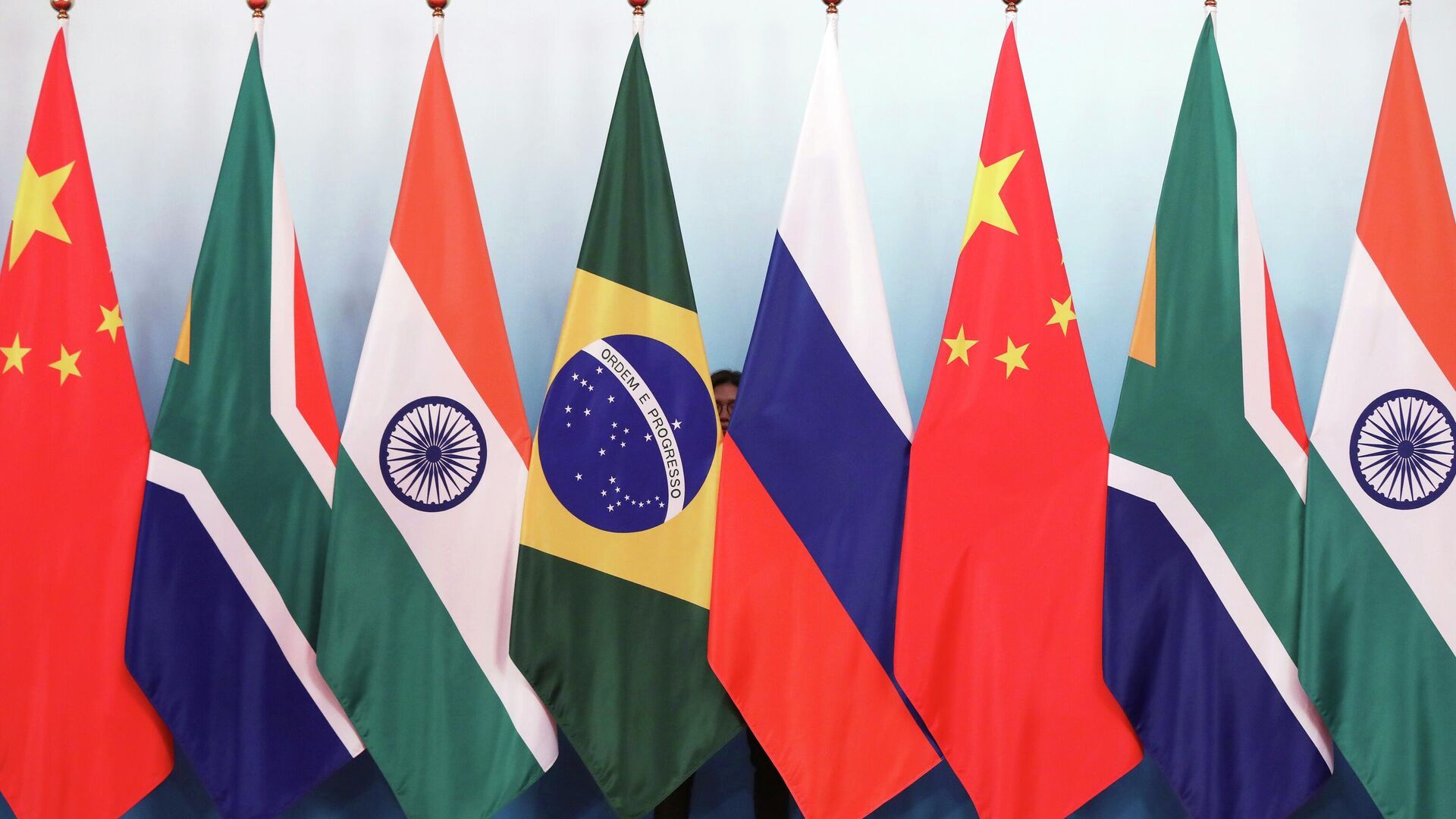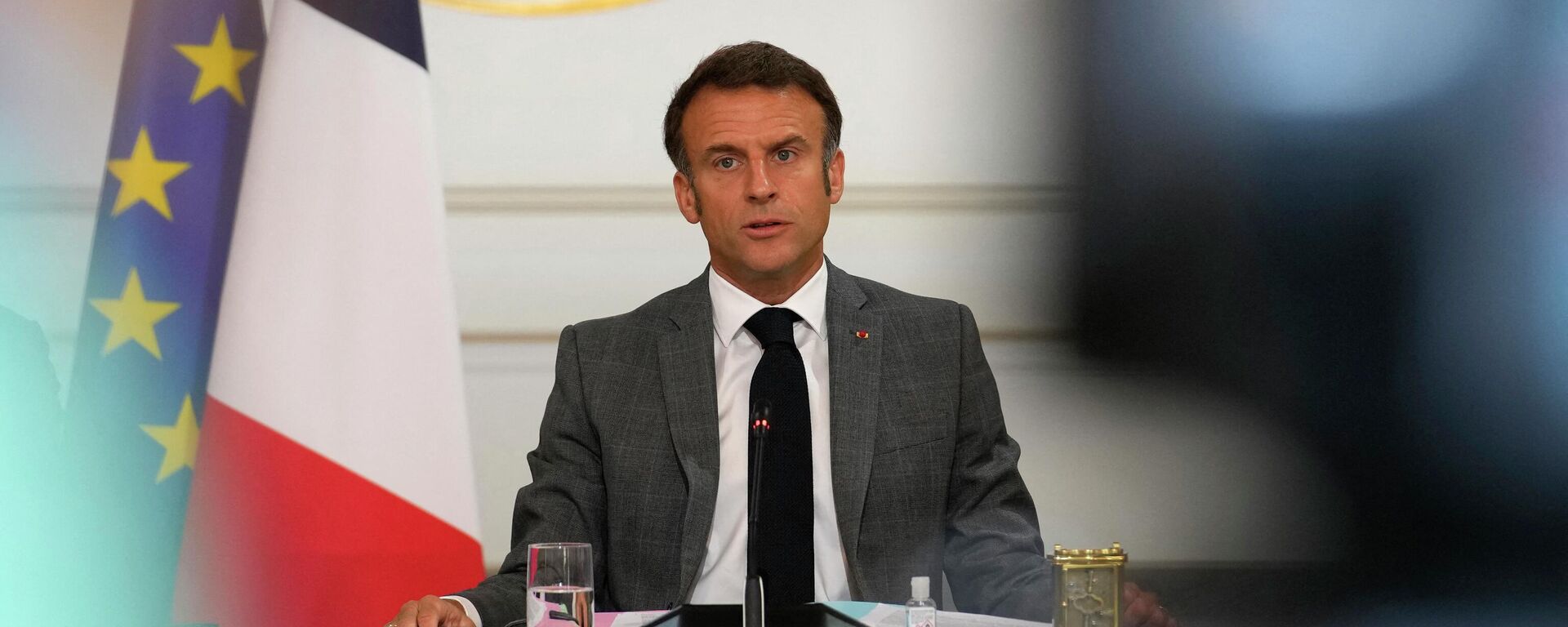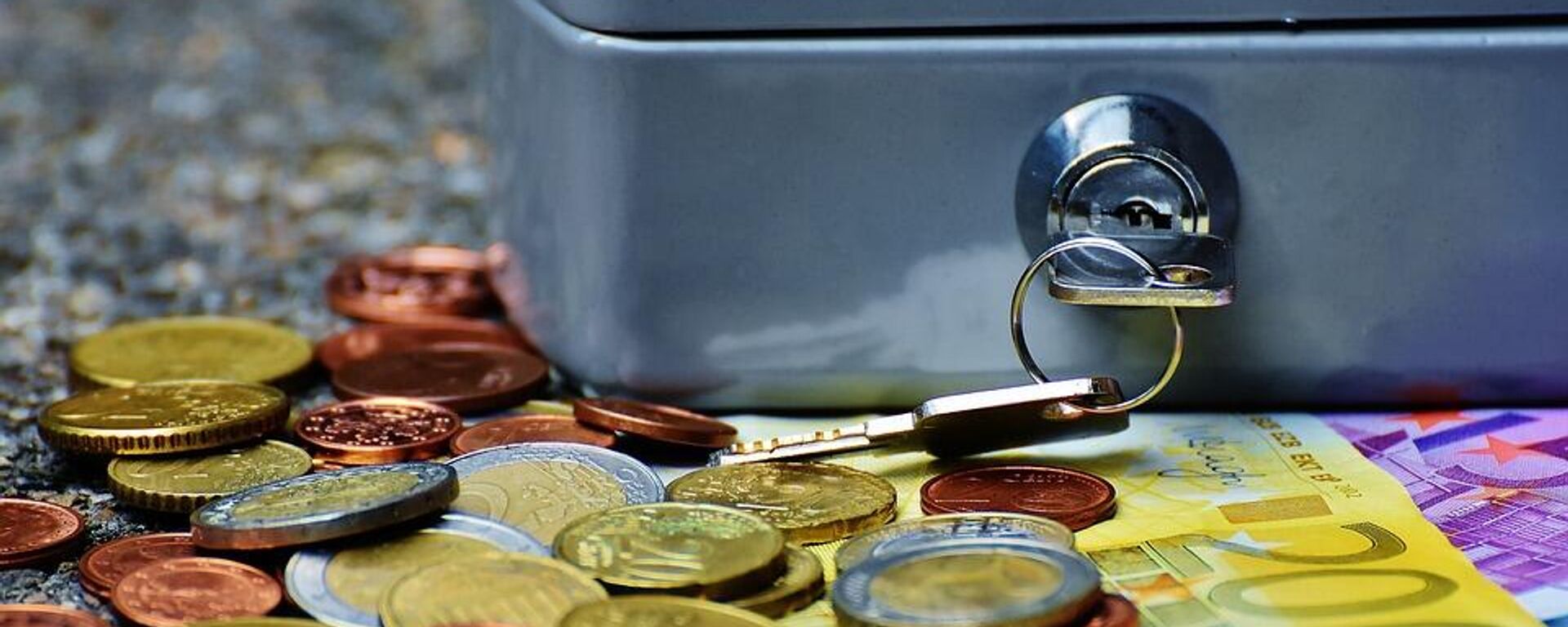https://en.sputniknews.africa/20230723/1060721474.html
What is BRICS Bloc and How Does It Stack Up Against G7 Goliath?
What is BRICS Bloc and How Does It Stack Up Against G7 Goliath?
Sputnik Africa
BRICS leaders are gearing up for their much-anticipated South Africa summit. Since the bloc’s creation at a forum in St. Petersburg in 2006, BRICS has come to... 23.07.2023, Sputnik Africa
2023-07-23T18:55+0200
2023-07-23T18:55+0200
2023-08-16T10:22+0200
brics
brics summit
brics expansion
g7
g20
economic growth
cooperation
features
economy
new development bank (ndb)
https://cdn1.img.sputniknews.africa/img/07e7/04/0c/1058535147_0:63:3072:1791_1920x0_80_0_0_fff388211eb51862395cd4f332a912f5.jpg
The summit of the leaders of Brazil, Russia, India, China, and South Africa (together, BRICS) is set to kick off on August 22 in Johannesburg, and will be the first face-to-face meeting the group has had since 2019.Front and center at this year’s forum will be the possible creation of a common BRICS currency – an eventuality which could dramatically strengthen the bloc’s positions in global affairs. But more on this below. First, some basic answers to some basic questions.How Did BRICS Come About and What is Its Purpose?The association of Brazil, Russia, India, and China (or BRIC – South Africa would join in December 2010) came to fruition at the St. Petersburg Economic Forum in June 2006, when the economy ministers of the four founding members created the group to facilitate economic growth. The first official meeting of BRIC members took place on the sidelines of a session of the UN General Assembly in September 2006, with the first summit meeting occurring in Yekaterinburg, Russia in June 2009.From the outset, the group of countries proposed and hammered out a variety of mostly economy-related goals, from joint investment opportunities and economic cooperation, to dealing with the 2008 financial crisis, global development, UN reform, and ensuring that "emerging and developing economies" have a "greater voice and representation in international financial institutions."The communique of the June 2009 Yekaterinburg summit summarized the parties’ goals and interests: promoting "dialogue and cooperation among our countries in an incremental, proactive, pragmatic, open and transparent way," with the goal of "not only serving common interests of emerging market economies and developing countries, but also building a harmonious world of lasting peace and common prosperity."How Does BRICS Stack Up Against the G7?Less than a decade-and-a-half on since its foundation, BRICS countries have demonstrated how far they have come, surpassing the G7 wealthy industrialized nations in GDP in 2022 (and in PPP in 2018), and setting up cooperative pathways and institutions to ensure members’ ability to withstand pressure by third parties aimed at harming their economies. Seven years from now, by 2030, the BRICS countries are expected to account for over 50 percent of the world’s nominal GDP, thus further strengthening their positions as the economically most powerful economic bloc in the world.Where is BRICS Headquartered?Unlike many Western-led economic and political institutions, BRICS doesn’t have a single headquarters. Instead, its institutions are spread across its member countries, with the New Development Bank headquartered in Shanghai, China, while the BRICS Business Council is situated in Johannesburg, South Africa, and the Contingent Reserve Arrangement short-term financial assistance framework is based in Moscow, Russia. Summits move from country to country, further solidifying the image of an equality-based partnership in the bloc.Which Countries Want to Join BRICS?The BRICS group’s growing economic and political capital, combined with its proposed alternative to Western economic hegemony, has proven highly attractive to many countries in the developing world and the Global South. Algeria, Argentina, Bangladesh, Belarus, Egypt, Ethiopia, and Iran are formal candidates to the organization, and nearly three dozen other nations across Africa, Asia, the Middle East, and Latin America from Nigeria and Turkiye to Afghanistan, Indonesia, Mexico, Venezuela, and Saudi Arabia have either applied to join or expressed an interest in doing so.Is the BRICS Group a Superpower?Not in the traditional sense. Unlike the geopolitical power blocs of the 20th and early 21st centuries, BRICS members have emphasized openness, pragmatism, and non-bloc status as keystones to cooperation between them. This, incidentally, has helped tremendously in allowing countries which might otherwise see themselves as potential rivals (China and India, for example) work harmoniously within the organization despite their differences.That said, the bloc’s members together enjoy a combined GDP of over $26 trillion, account for over 3.27 billion people (41 percent of the world’s population), and 26.7 percent of the world’s land area (39.7 million square km). The BRICS nations are also home to some of the world’s top economic and technological powers (China) and military powers (Russia).What is the Proposed BRICS Currency?The much-talked about BRICS currency – i.e. the push to create a new trade and reserve currency that could serve as an alternative to the US dollar, has been one of the most talked about topics of the upcoming summit in South Africa – and compared in terms of global significance to the 1971 US decision to go off the gold standard.The details of the new currency have yet to be worked out, with BRICS economic heavyweights China and India undoubtedly needing to work out its fine points before an agreement can be reached which accommodates the interests of all parties. Such discussions are undoubtedly underway. Observers predict that the currency might be pegged to a basket of commodities, and operate as a digital currency for inter-state trade.How Will BRICS' Rise Affect the US Economy?The continued integration of BRICS, and in particular the possible creation of an alternative to the US dollar, threatens to knock Washington down a peg in terms of its global economic might and ability to bully other countries through sanctions, other restrictions, unfair competition, and naked military force. If BRICS members can set aside their differences and come up with the right combination that accounts for all members’ interests, the fairer and more inclusive world order their members have discussed at length can come one step closer to reality.That said, it has never been the BRICS group’s stated goal to artificially damage or ruin the US or other Western countries economically or politically. Rather, the goal is to replace unipolarity with genuine multipolarity.
https://en.sputniknews.africa/20230723/macron-has-not-received-invitation-to-brics-summit-from-south-africa-1060710118.html
https://en.sputniknews.africa/20230722/brics-aims-to-make-more-settlements-in-national-currencies-russian-foreign-ministry-1060696869.html
Sputnik Africa
feedback@sputniknews.com
+74956456601
MIA „Rossiya Segodnya“
2023
News
en_EN
Sputnik Africa
feedback@sputniknews.com
+74956456601
MIA „Rossiya Segodnya“
Sputnik Africa
feedback@sputniknews.com
+74956456601
MIA „Rossiya Segodnya“
brics, brics summit, brics expansion, g7, g20, economic growth, cooperation, economy, new development bank (ndb)
brics, brics summit, brics expansion, g7, g20, economic growth, cooperation, economy, new development bank (ndb)
What is BRICS Bloc and How Does It Stack Up Against G7 Goliath?
18:55 23.07.2023 (Updated: 10:22 16.08.2023) BRICS leaders are gearing up for their much-anticipated South Africa summit. Since the bloc’s creation at a forum in St. Petersburg in 2006, BRICS has come to represent the aspirations of the developing world to challenge the economic hegemony of the collective West. How does it plan to achieve this goal? Check out Sputnik’s explainer to find out.
The summit of the leaders of Brazil, Russia, India, China, and South Africa (together,
BRICS) is set to kick off on August 22 in Johannesburg, and will be the first face-to-face meeting the group has had since 2019.
Front and center at this year’s forum will be the possible creation of a common BRICS currency – an eventuality which could dramatically strengthen the bloc’s positions in global affairs. But more on this below. First, some basic answers to some basic questions.
How Did BRICS Come About and What is Its Purpose?
The association of Brazil, Russia, India, and China (or BRIC – South Africa would join in December 2010) came to fruition at the St. Petersburg Economic Forum in June 2006, when the economy ministers of the four founding members created the group to facilitate economic growth. The first official meeting of BRIC members took place on the sidelines of a session of the UN General Assembly in September 2006, with the first summit meeting occurring in Yekaterinburg, Russia in June 2009.
From the outset, the group of countries proposed and
hammered out a variety of mostly economy-related goals, from
joint investment opportunities and economic cooperation, to dealing with the 2008 financial crisis, global development, UN reform, and ensuring that "emerging and developing economies" have a "greater voice and representation in international financial institutions."The communique of the June 2009 Yekaterinburg summit
summarized the parties’ goals and interests: promoting "dialogue and cooperation among our countries in an incremental, proactive, pragmatic, open and transparent way," with the goal of
"not only serving common interests of emerging market economies and developing countries, but also building a harmonious world of lasting peace and common prosperity."How Does BRICS Stack Up Against the G7?
Less than a decade-and-a-half on since its foundation, BRICS countries have demonstrated how far they have come,
surpassing the G7 wealthy industrialized nations in GDP in 2022 (and in PPP in 2018), and setting up cooperative pathways and institutions to ensure members’ ability to withstand pressure by third parties aimed at harming their economies.
Seven years from now, by 2030, the BRICS countries are expected to account for over 50 percent of the world’s nominal GDP, thus further strengthening their positions as the economically most powerful economic bloc in the world.
Where is BRICS Headquartered?
Unlike many Western-led economic and political institutions, BRICS doesn’t have a single headquarters. Instead, its institutions are spread across its member countries, with the New Development Bank headquartered in Shanghai, China, while the BRICS Business Council is situated in Johannesburg, South Africa, and the Contingent Reserve Arrangement short-term financial assistance framework is based in Moscow, Russia. Summits move from country to country, further solidifying the image of an equality-based partnership in the bloc.
Which Countries Want to Join BRICS?
The BRICS group’s growing economic and political capital, combined with its proposed alternative to Western economic hegemony, has proven highly attractive to many countries in the developing world and the Global South.
Algeria, Argentina, Bangladesh, Belarus, Egypt, Ethiopia, and Iran are formal candidates to the organization, and
nearly three dozen other nations across Africa, Asia, the Middle East, and Latin America from Nigeria and Turkiye to Afghanistan, Indonesia, Mexico, Venezuela, and Saudi Arabia have either
applied to join or expressed an interest in doing so.
Is the BRICS Group a Superpower?
Not in the traditional sense. Unlike the geopolitical power blocs of the 20th and early 21st centuries, BRICS members have emphasized
openness, pragmatism, and non-bloc status as keystones to cooperation between them. This, incidentally, has helped tremendously in allowing countries which might otherwise see themselves as potential rivals (China and India, for example) work harmoniously within the organization despite their differences.
That said, the bloc’s members together enjoy a combined GDP of over $26 trillion, account for over 3.27 billion people (41 percent of the world’s population), and 26.7 percent of the world’s land area (39.7 million square km). The BRICS nations are also home to some of the world’s top economic and technological powers (China) and military powers (Russia).
What is the Proposed BRICS Currency?
The much-talked about BRICS currency – i.e. the push to create a new trade and reserve currency that could serve as an alternative to the US dollar, has been one of the most talked about topics of the upcoming summit in South Africa – and
compared in terms of global significance to the 1971 US decision to go off the gold standard.
The details of the new currency have yet to be worked out, with BRICS economic heavyweights China and India undoubtedly needing to work out its fine points before an agreement can be reached which accommodates the interests of all parties. Such discussions are undoubtedly underway. Observers predict that the currency might be pegged to a basket of commodities, and operate as a digital currency for inter-state trade.
How Will BRICS' Rise Affect the US Economy?
The continued integration of BRICS, and in particular the possible creation of an alternative to the US dollar, threatens to
knock Washington down a peg in terms of its global
economic might and
ability to bully other countries through sanctions, other restrictions, unfair competition, and naked military force. If BRICS members can set aside their differences and come up with the right combination that accounts for all members’ interests, the fairer and more inclusive world order their members have discussed at length can come one step closer to reality.
That said, it has never been the BRICS group’s stated goal to artificially damage or ruin the US or other Western countries economically or politically. Rather, the goal is to replace unipolarity with genuine multipolarity.



